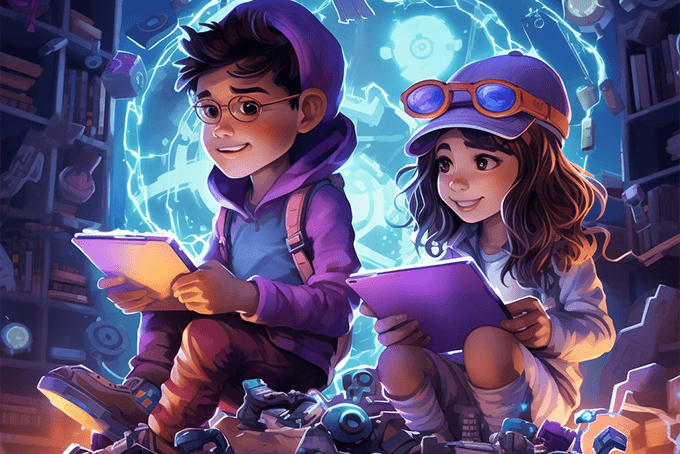Definition
This learning theory is based on the structure and function of the brain. As long as the brain is not prohibited from fulfilling its normal processes, learning will occur.
Please note: since this article was published, Geoffrey and Renate Caine, leaders in brain-based learning research, have modified their principles on the topic. Please visit this Funderstanding article to learn about their updated views on brain based learning, which they are referring to as Brain/Mind Principles of Natural Learning.
Discussion
People often say that everyone can learn. Yet the reality is that everyone does learn. Every person is born with a brain that functions as an immensely powerful processor. Traditional schooling, however, often inhibits learning by discouraging, ignoring, or punishing the brain’s natural learning processes.
The core principles of brain-based learning state that:
- The brain is a parallel processor, meaning it can perform several activities at once, like tasting and smelling.
- Learning engages the whole physiology.
- The search for meaning is innate.
- The search for meaning comes through patterning.
- Emotions are critical to patterning.
- The brain processes wholes and parts simultaneously.
- Learning involves both focused attention and peripheral perception.
- Learning involves both conscious and unconscious processes.
- We have two types of memory: spatial and rote.
- We understand best when facts are embedded in natural, spatial memory.
- Learning is enhanced by challenge and inhibited by threat.
- Each brain is unique.
The three instructional techniques associated with brain-based learning are:
- Orchestrated immersion–Creating learning environments that fully immerse students in an educational experience
- Relaxed alertness–Trying to eliminate fear in learners, while maintaining a highly challenging environment
- Active processing–Allowing the learner to consolidate and internalize information by actively processing it
How Brain-Based Learning Impacts Education
Curriculum–Teachers must design learning around student interests and make learning contextual.
Instruction–Educators let students learn in teams and use peripheral learning. Teachers structure learning around real problems, encouraging students to also learn in settings outside the classroom and the school building.
Assessment–Since all students are learning, their assessment should allow them to understand their own learning styles and preferences. This way, students monitor and enhance their own learning process.
What Brain-Based Learning Suggests
How the brain works has a significant impact on what kinds of learning activities are most effective. Educators need to help students have appropriate experiences and capitalize on those experiences. As Renate Caine illustrates on p. 113 of her book Making Connections, three interactive elements are essential to this process:
- Teachers must immerse learners in complex, interactive experiences that are both rich and real. One excellent example is immersing students in a foreign culture to teach them a second language. Educators must take advantage of the brain’s ability to parallel process.
- Students must have a personally meaningful challenge. Such challenges stimulate a student’s mind to the desired state of alertness.
- In order for a student to gain insight about a problem, there must be intensive analysis of the different ways to approach it, and about learning in general. This is what’s known as the “active processing of experience.”
A few other tenets of brain-based learning include:
Feedback is best when it comes from reality, rather than from an authority figure.
People learn best when solving realistic problems.
The big picture can’t be separated from the details.
Because every brain is different, educators should allow learners to customize their own environments.
The best problem solvers are those that laugh!
Designers of educational tools must be artistic in their creation of brain-friendly environments. Instructors need to realize that the best way to learn is not through lecture, but by participation in realistic environments that let learners try new things safely.
For more information about the Caines' research on brain/mind principles of natural learning, please visit their website.
Reading
Renate and Geoffrey Caine, Making Connections: Teaching and the Human Brain.
Leslie Hart, Human Brain, Human Learning.



